Physical Address
304 North Cardinal St.
Dorchester Center, MA 02124
Physical Address
304 North Cardinal St.
Dorchester Center, MA 02124

Discover 20 smart apartment bedroom ideas perfect for multi-generational homes. Create spaces that maximize functionality and style while accommodating family members of all ages and needs.
When designing apartment bedrooms in Multi-Generational Homes, the challenge lies in creating spaces that serve diverse needs while maintaining harmony. Limited square footage doesn’t mean sacrificing comfort or personal expression—it simply requires thoughtful planning and creative solutions.
As someone who has designed countless spaces for extended families living together, I’ve seen firsthand how the right bedroom setup can transform daily life. These 20 apartment bedroom ideas will help you create sanctuaries that respect individual needs while maximizing every inch available, whether you’re accommodating aging parents, adult children, or multiple generations under one roof.
In multi-generational apartment bedrooms, floor space is precious real estate that everyone competes for. This is why vertical storage solutions become essential—they utilize the full height of your walls, drawing the eye upward while keeping necessities organized. By stacking storage vertically rather than spreading it horizontally, you create breathing room that makes shared spaces feel less crowded and more intentional.
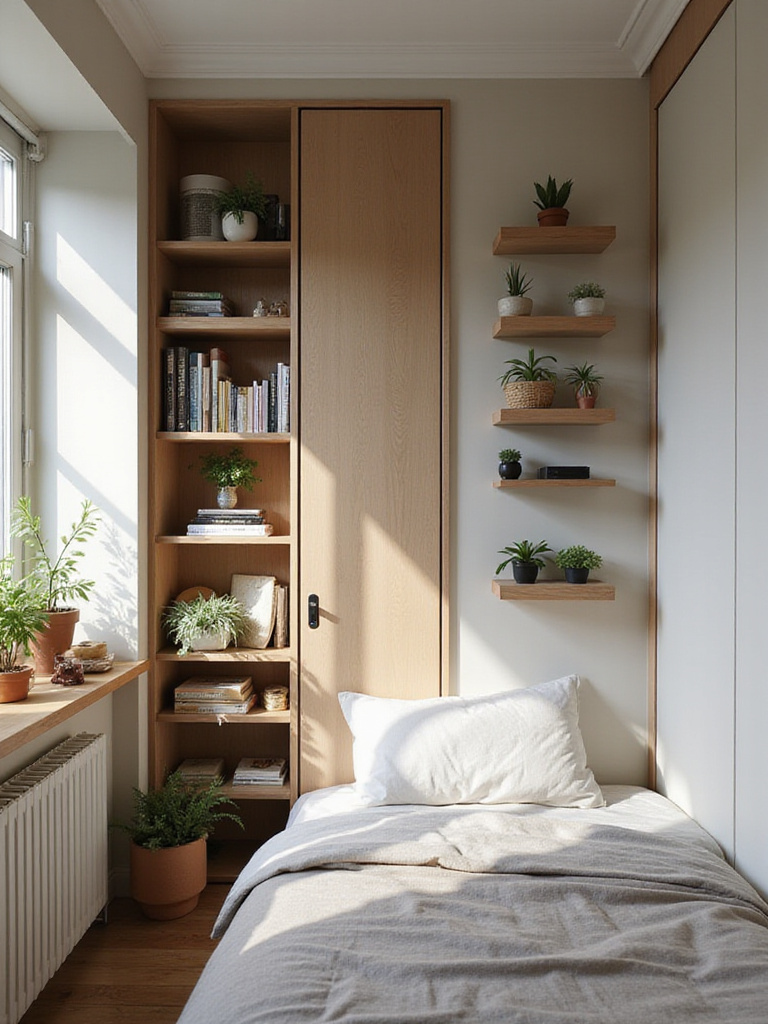
Look for narrow bookcases that can nestle into corners, floor-to-ceiling wardrobes with adjustable shelving, and wall-mounted cabinets that float above nightstands. For older family members, ensure frequently used items remain within comfortable reach, while seasonal or less-used belongings can live in higher zones. Remember to anchor tall furniture securely to walls—safety becomes even more critical in homes with both children and seniors.
The inspiration for this collection struck when I visited a family of five generations sharing a three-bedroom apartment in San Francisco—their ingenious use of vertical space allowed each generation to have personal storage without encroaching on common areas.
When accommodating multiple generations in apartment bedrooms, furniture that serves more than one purpose isn’t just clever—it’s essential. These versatile pieces dramatically reduce the number of items needed while maximizing functionality, allowing bedrooms to adapt to changing needs throughout the day and as family dynamics evolve.

Consider these multi-functional heroes:
What makes this design special is the way these pieces can adapt to different generations’ needs—the same storage ottoman might hold a grandchild’s toys during the day and serve as assistance for an older adult getting into bed at night.
Mirrors work magic in apartment bedrooms shared by multiple generations, essentially doubling visual space through reflection. This simple design tool can make even the smallest bedroom feel more expansive and bright—particularly important when family members of different ages need to share limited square footage without feeling cramped.
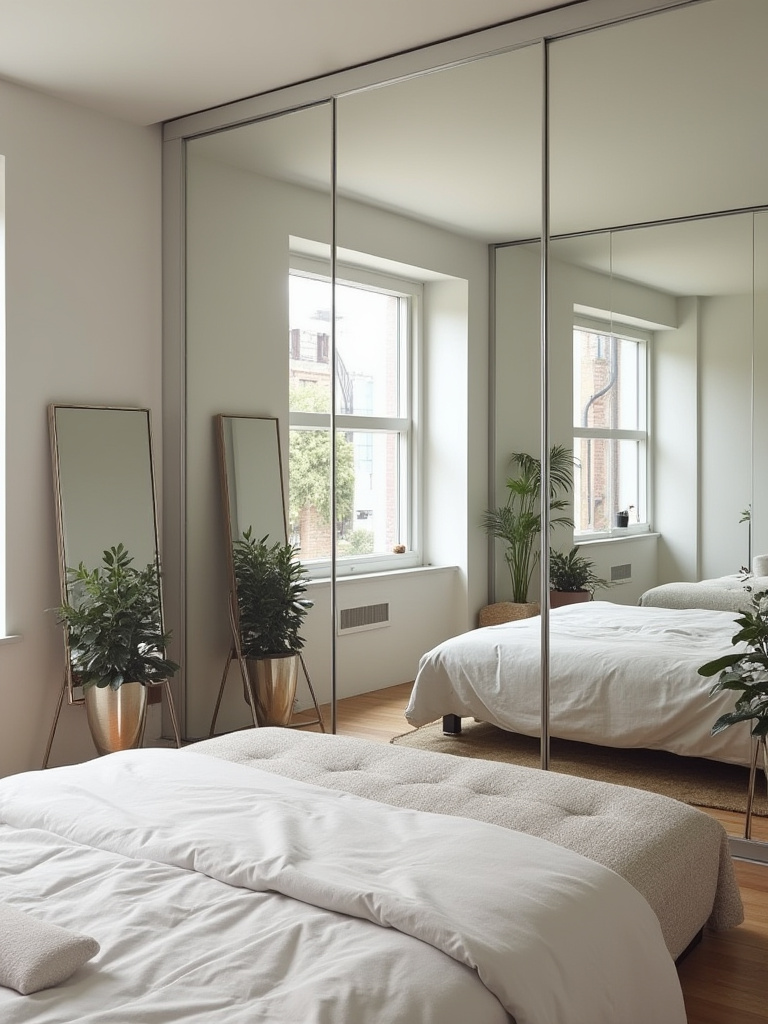
Position mirrors thoughtfully to maximize their impact: hang a large mirror opposite a window to bounce natural light throughout the room, use mirrored closet doors to visually double the space, or create a gallery of smaller mirrors as both decoration and space-enhancers. For seniors, well-placed mirrors can also improve safety by eliminating blind spots and enhancing lighting in darker corners of the room.
The artisans behind these designs began with understanding how different generations perceive space—younger eyes might not notice spatial limitations that can feel confining to older family members, making mirrors an inclusive design solution that benefits everyone.
The colors surrounding us affect mood and perception, especially in shared apartment bedrooms where different generations coexist. Soft blues, gentle greens, and tranquil neutrals create a peaceful foundation that appeals across age groups, promoting rest while making the space feel more open and serene.
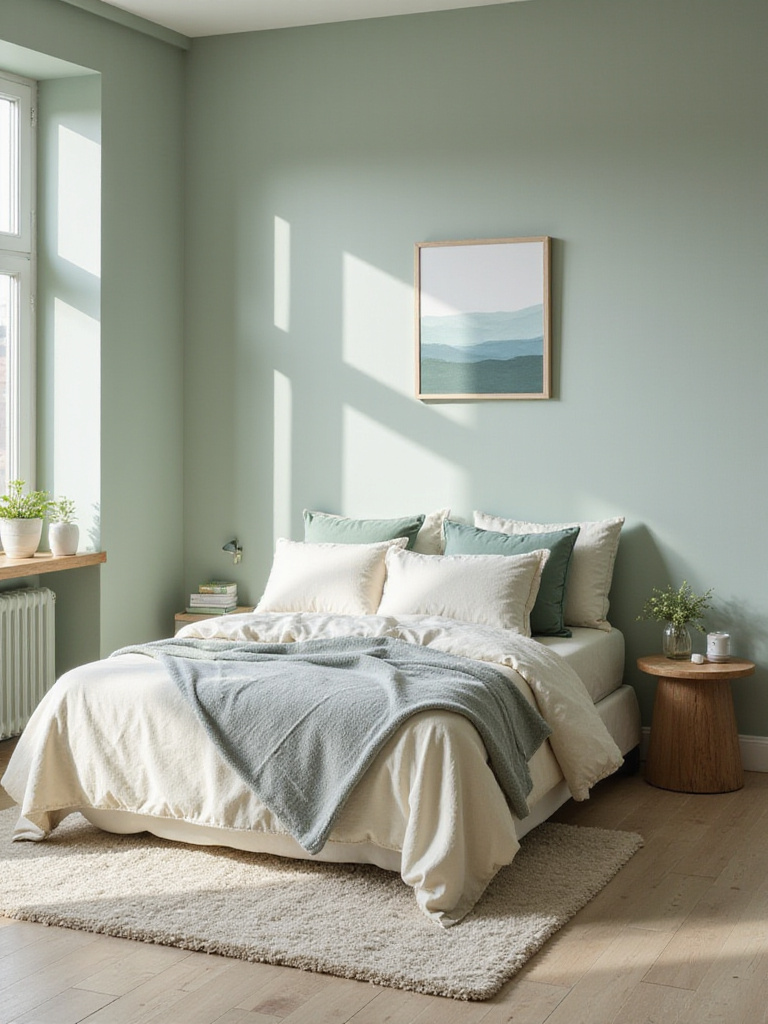
When selecting colors for multi-generational bedrooms, consider both aesthetic and practical concerns:
Warm neutrals (beige, taupe, soft gray) provide a timeless backdrop that bridges traditional and contemporary preferences
“The most successful multi-generational bedrooms I’ve designed use color as a unifier rather than a divider,” I often tell clients. “A palette that respects both traditional sensibilities and contemporary tastes creates harmony that transcends age differences.”
The unexpected environmental benefit comes from choosing quality, low-VOC paints that contribute to healthier indoor air quality—especially important in bedrooms shared by those with developing lungs and seniors with respiratory sensitivities.
Relying on a single overhead light in an apartment bedroom can create harsh shadows and uneven illumination that frustrates users of all ages. The magic of this piece lies in thoughtful layering of different light sources—ambient, task, and accent—creating a flexible environment that adapts to various activities and visual needs throughout the day.

For multi-generational bedrooms, consider:
When clients ask us about balancing style with comfort, I emphasize that proper lighting isn’t just decorative—it’s functional infrastructure that supports independence and dignity across generations.
The space beneath beds represents prime real estate in apartment bedrooms, often large enough to store items that would otherwise crowd closets or require additional furniture. For multi-generational homes, this hidden storage zone becomes even more valuable, offering discreet organization that maintains the room’s visual calm while accommodating belongings from different family members.

Explore these under-bed options with accessibility in mind:
The challenge of awkward spaces becomes easier when you recognize that under-bed storage isn’t one-size-fits-all in multi-generational homes—what works for a teenager might not serve grandparents, so customization is key.
Apartment bedroom ideas that honor each generation’s aesthetic preferences while maintaining harmony can be challenging. Temporary wallpaper and decals offer the perfect solution—allowing for personalization without permanent commitment, respecting both landlord restrictions and the changing needs of multi-generational households.
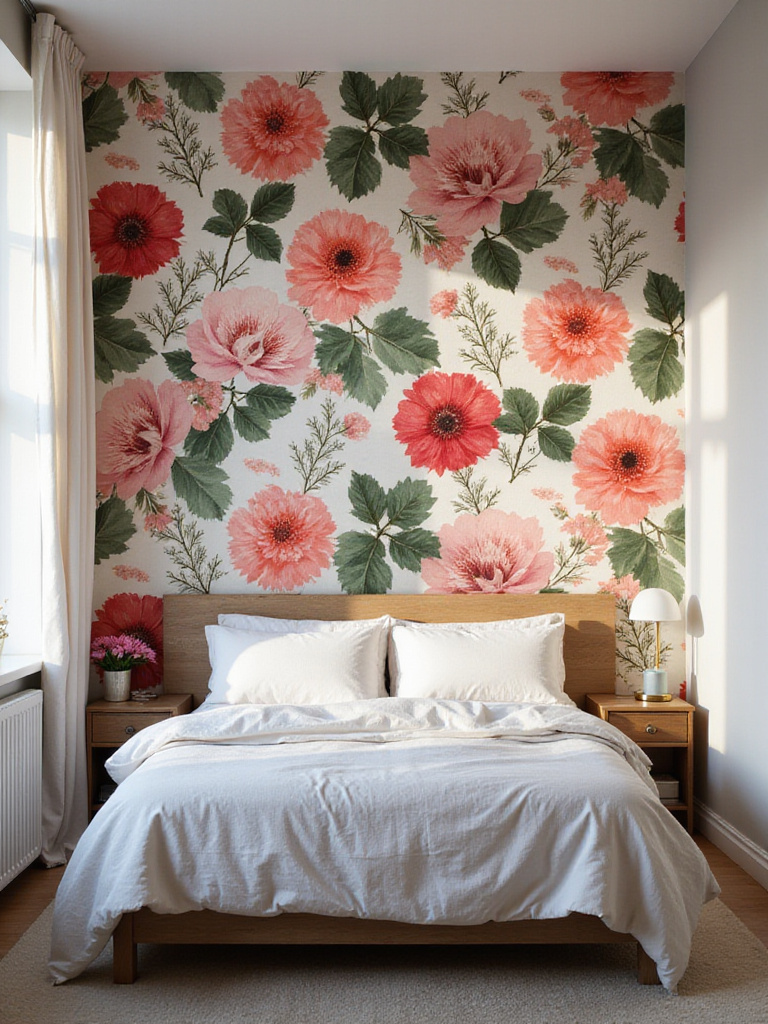
These removable options work beautifully in shared spaces:
The cultural heritage preserved in each piece includes the ability to express identity without creating tension—I’ve seen temporary wallpaper create wonderful compromises between grandparents who prefer traditional patterns and younger generations drawn to contemporary designs.
In apartment bedrooms shared by multiple generations, the bed naturally becomes the room’s centerpiece. By intentionally styling this essential piece as a focal point, you create a sense of purpose that anchors the space visually while providing maximum comfort for users of any age.
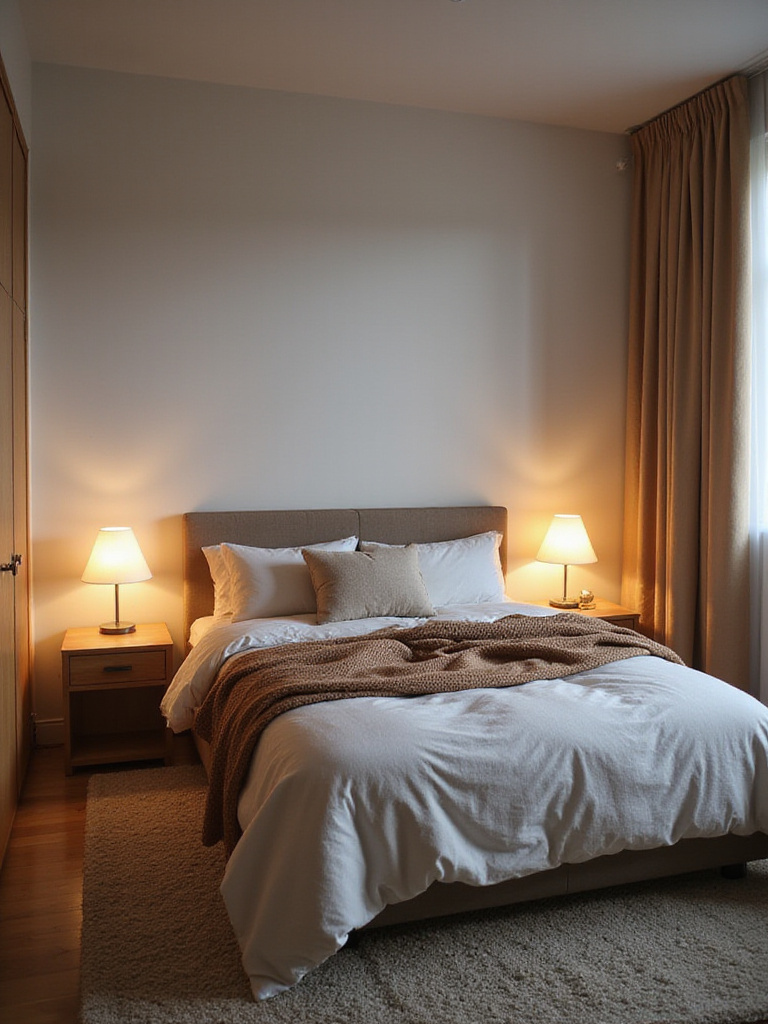
Creating a bed that serves as both sanctuary and statement involves thoughtful layering:
The interplay between the colors creates visual interest while the practical elements address the diverse physical needs present in multi-generational homes—proving function and beauty can coexist perfectly.
Bringing plants into apartment bedrooms creates a connection to nature that benefits all generations. Beyond their aesthetic appeal, plants improve air quality by filtering toxins and regulating humidity—creating healthier sleeping environments particularly beneficial for developing children and seniors with respiratory sensitivities.
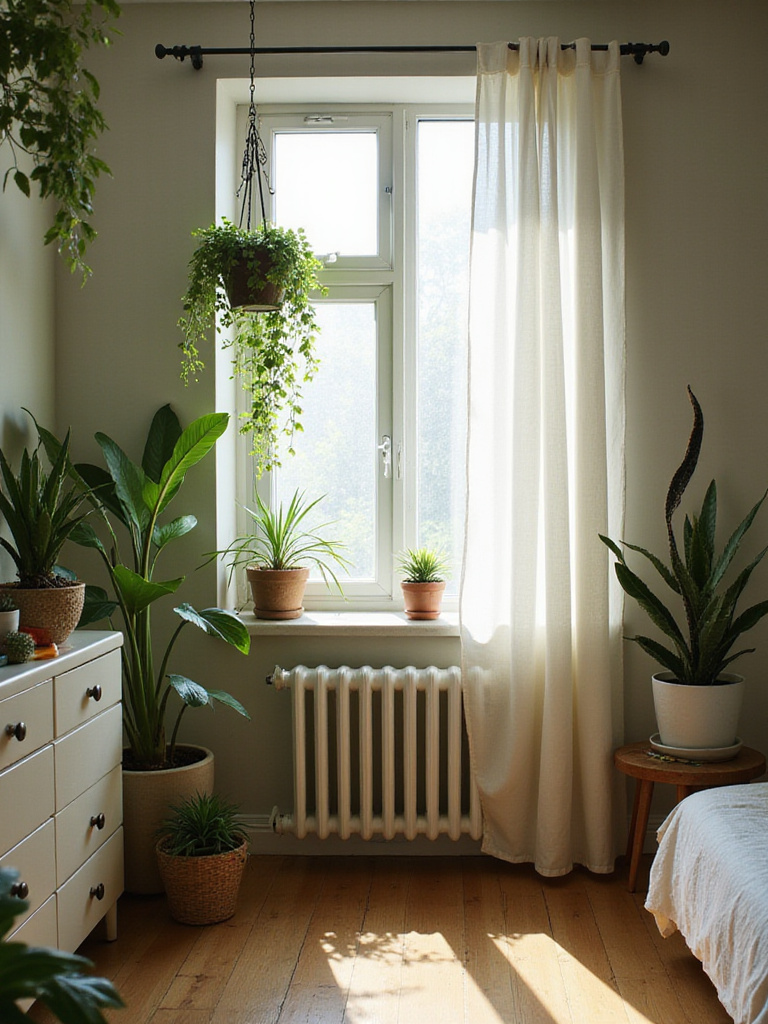
Select plants that serve multiple purposes in multi-generational spaces:
Many homeowners wonder how to incorporate nature without creating maintenance burdens. The solution lies in choosing the right plants for your specific situation—considering light conditions, care requirements, and ensuring they’re non-toxic if children or pets share the space.
In apartment bedrooms that serve multiple generations, rugs do more than decorate—they create invisible boundaries that help organize the space functionally. A strategically placed rug establishes distinct areas for sleeping, dressing, reading, or working, helping family members of different ages navigate shared quarters with greater ease.
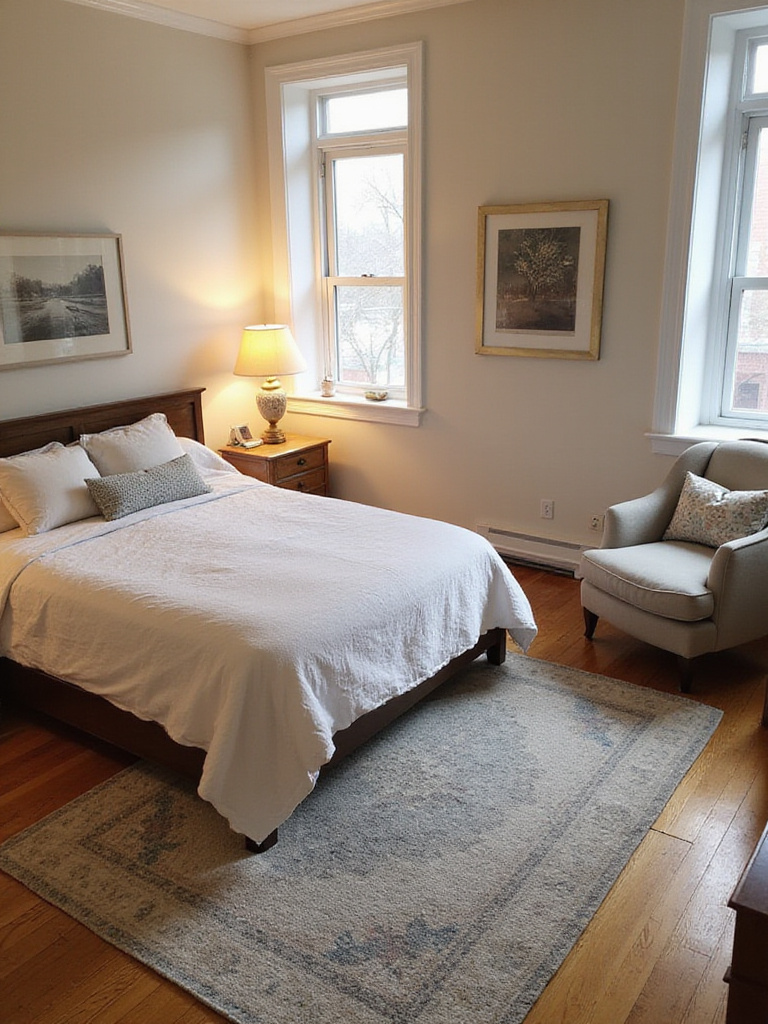
When selecting rugs for multi-generational bedrooms, consider these practical aspects:
For those worried about maintenance, today’s indoor/outdoor rugs offer remarkable durability while providing the warmth and acoustic benefits that make bedrooms more comfortable for all generations.
This season’s design language speaks to creating perceived spaciousness—a crucial consideration in apartment bedrooms shared by multiple generations. By mounting curtain rods close to the ceiling and extending them well beyond window frames, you create an architectural illusion that makes windows appear larger and ceilings higher, benefiting everyone who uses the space.
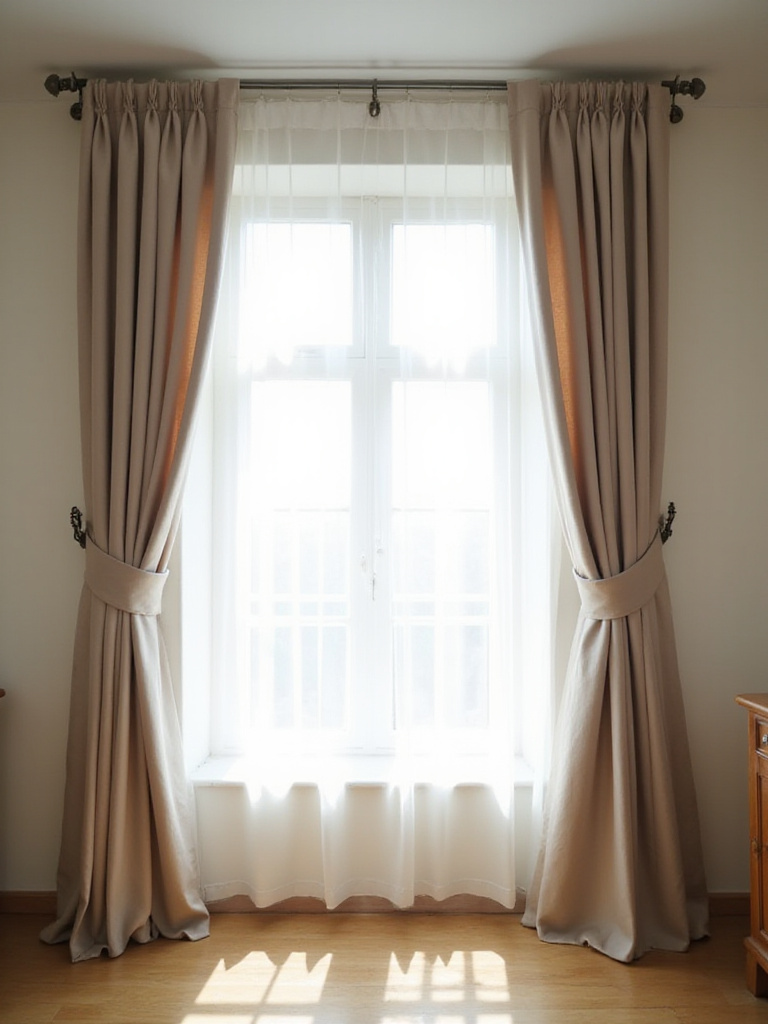
This technique offers particular advantages in multi-generational settings:
The versatility reveals itself when you pair this with appropriate fabric choices—sheer panels that filter light for daytime privacy, blackout linings for those who need darkness to sleep well, or easy-pull systems that accommodate users with varying physical abilities.
When multiple generations share apartment bedrooms, clutter becomes more than an aesthetic issue—it creates physical and psychological barriers to harmony. Every unnecessary item takes up precious space and creates visual noise that can be particularly stressful for older adults and overwhelming for younger family members.
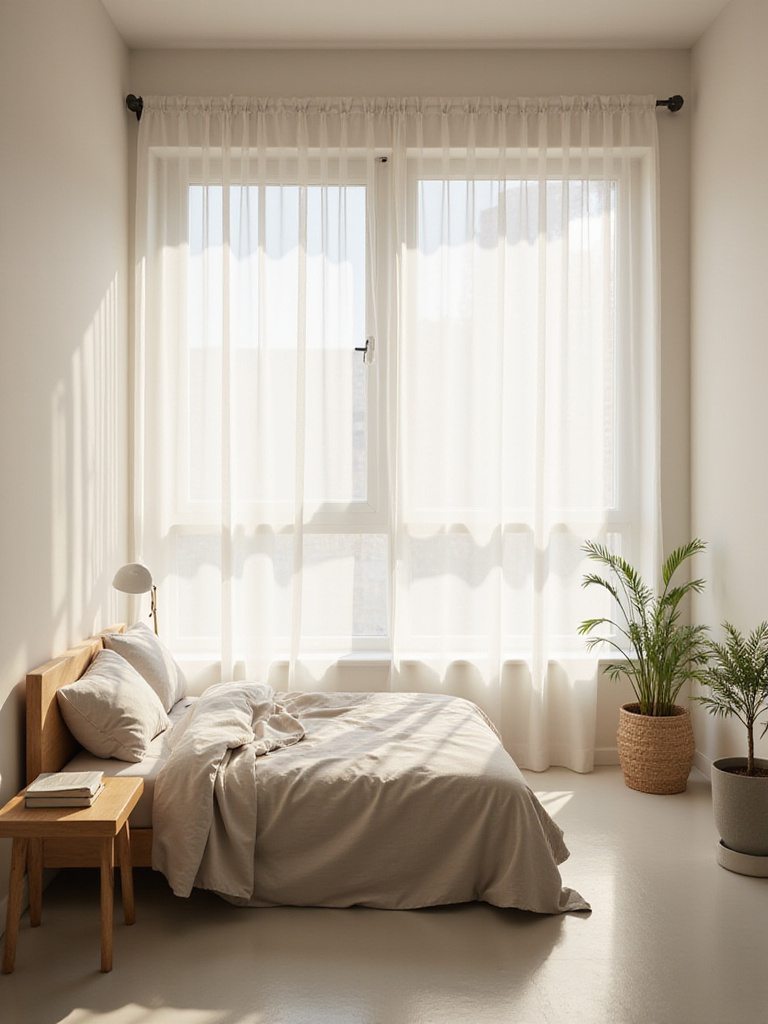
Approach decluttering with these multi-generational considerations:
“In multi-generational homes, decluttering isn’t about minimalism—it’s about intentionality,” I remind clients. “Each item should earn its place by serving current needs, not past attachments or future possibilities.”
The styling mistake most people make is approaching decluttering as a one-time event rather than an ongoing practice that evolves as family needs change—especially important as children grow and older adults’ needs shift.
Even in compact apartment bedrooms, carving out dedicated workspaces becomes essential when accommodating multiple generations with different activities and schedules. Having designated areas for studying, working, or pursuing hobbies helps establish healthy boundaries and routines—particularly important when family members operate on different timetables.
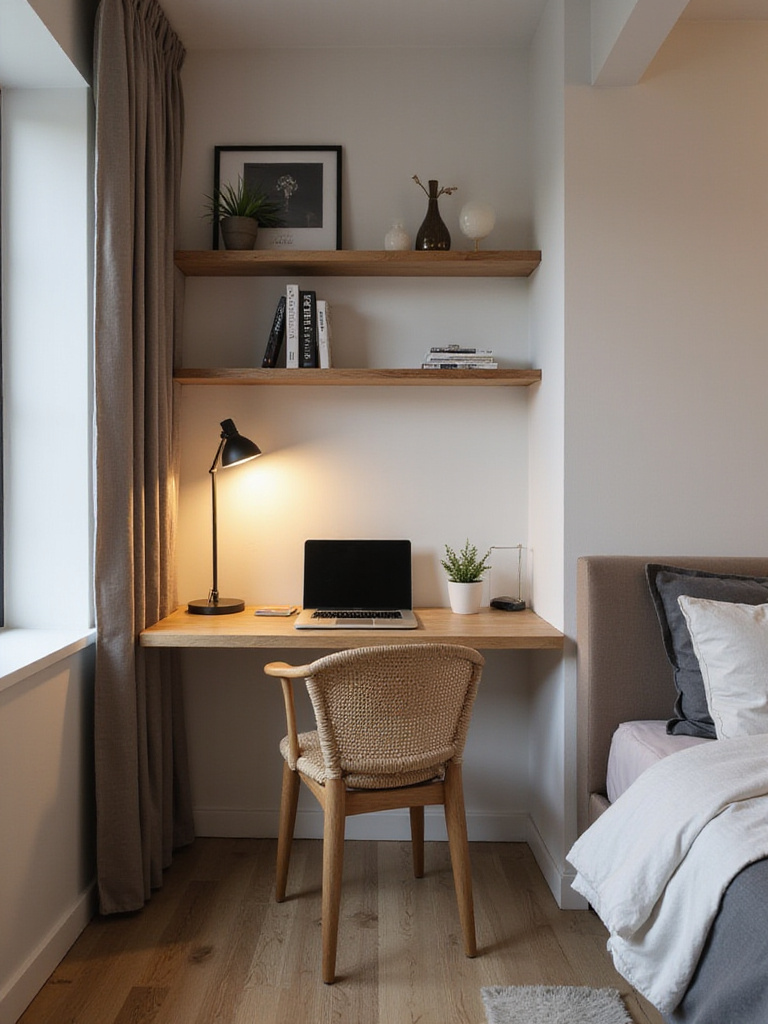
When designing workspace nooks for multi-generational use, consider:
Beyond aesthetics, the ecological impact matters because well-designed workspaces prevent the need for duplicate furniture pieces—a small, thoughtfully planned desk area can serve a teenager’s homework needs in the afternoon and an adult’s bill-paying station in the evening.
In apartment bedrooms shared across generations, wall art becomes a powerful tool for honoring each person’s identity while creating a cohesive environment. Thoughtfully selected and arranged framed pieces tell your family’s story, bridging generational gaps and creating a sense of belonging that transforms generic apartments into deeply personal spaces.

Consider these approaches for multi-generational wall galleries:
Look closely and you’ll notice the subtle texture of meaning these displays create—beyond decoration, they become visual affirmations of each person’s place within the family narrative, particularly important in shared living arrangements where personal space may be limited.
The environmental story behind slim and floating furniture began with urban apartment dwellers seeking solutions for increasingly compact living spaces. In multi-generational bedrooms, these space-efficient designs serve an even more important purpose—they maintain clear pathways and open floor area that benefits users of all ages and abilities.
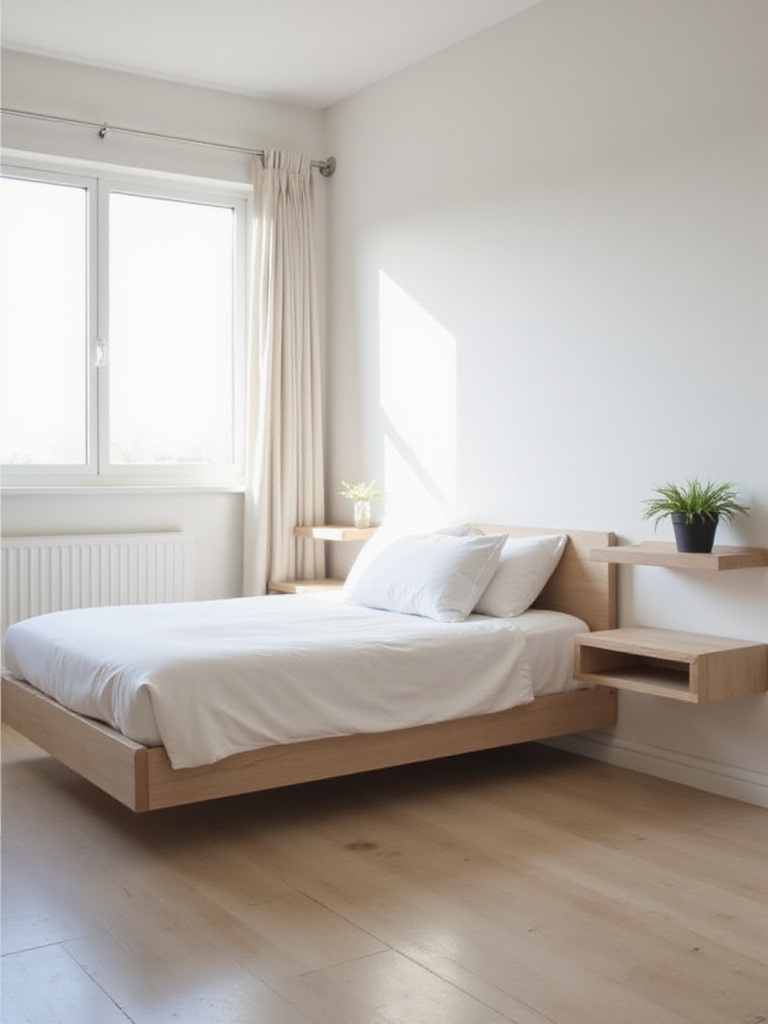
These furniture styles offer specific advantages in shared spaces:
The craftsmanship reveals itself in details like how these pieces enhance both functionality and visual openness—creating rooms that feel intentional rather than overcrowded, a crucial distinction when multiple generations share limited square footage.
While designing apartment bedroom ideas for multi-generational households, I’ve found that walls offer untapped potential for personalized storage. Wall-mounted shelving transforms vertical surfaces into functional organization systems that keep essentials accessible while freeing up valuable floor space needed for movement and furniture.
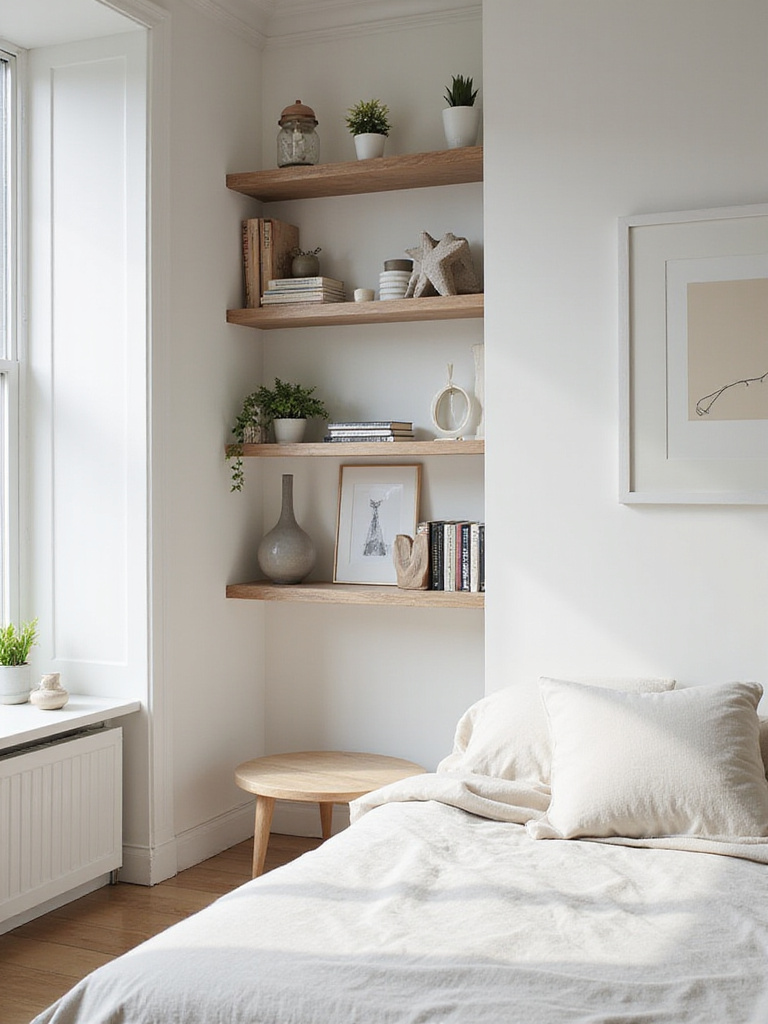
For families spanning different generations, consider these shelving approaches:
Running your hand across this material reveals the practical advantage of quality shelving—durability that withstands use by multiple family members and flexibility that adapts as needs evolve over time.
Even in modest apartment bedrooms, designating a dedicated reading nook creates a retreat-within-a-retreat that benefits family members of all ages. This intentional space provides a quiet alternative to the bed for relaxation, supporting healthy boundaries in shared living situations while offering a comfortable spot for everything from bedtime stories with grandchildren to peaceful morning coffee.
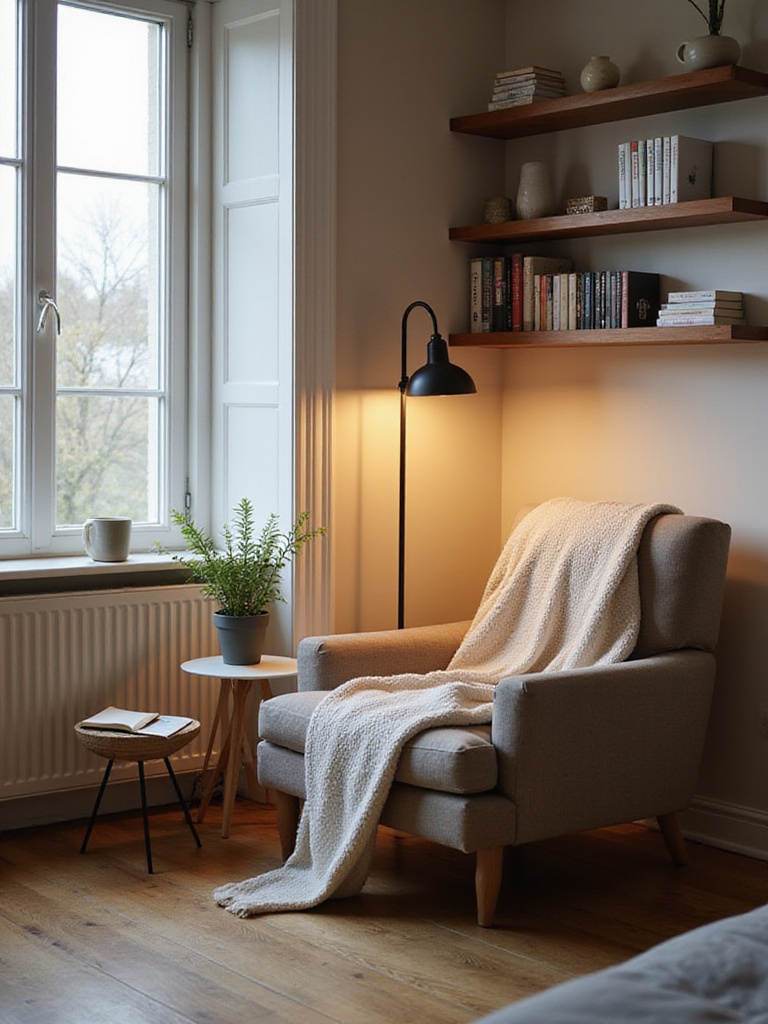
Elements of a successful multi-generational reading corner include:
The finishing touch that elevates the entire look is personalization—a basket of children’s books alongside adult reading material, a special throw that belongs to grandma, or a small plant that a teenager tends. These details signal that the space welcomes all generations.
Apartment bedroom ideas that incorporate varied textures create sensory richness that appeals across generations. In spaces where multiple family members coexist, textiles become an accessible way to introduce comfort, color, and personality without permanent changes or major investments—perfect for rental situations or evolving family needs.
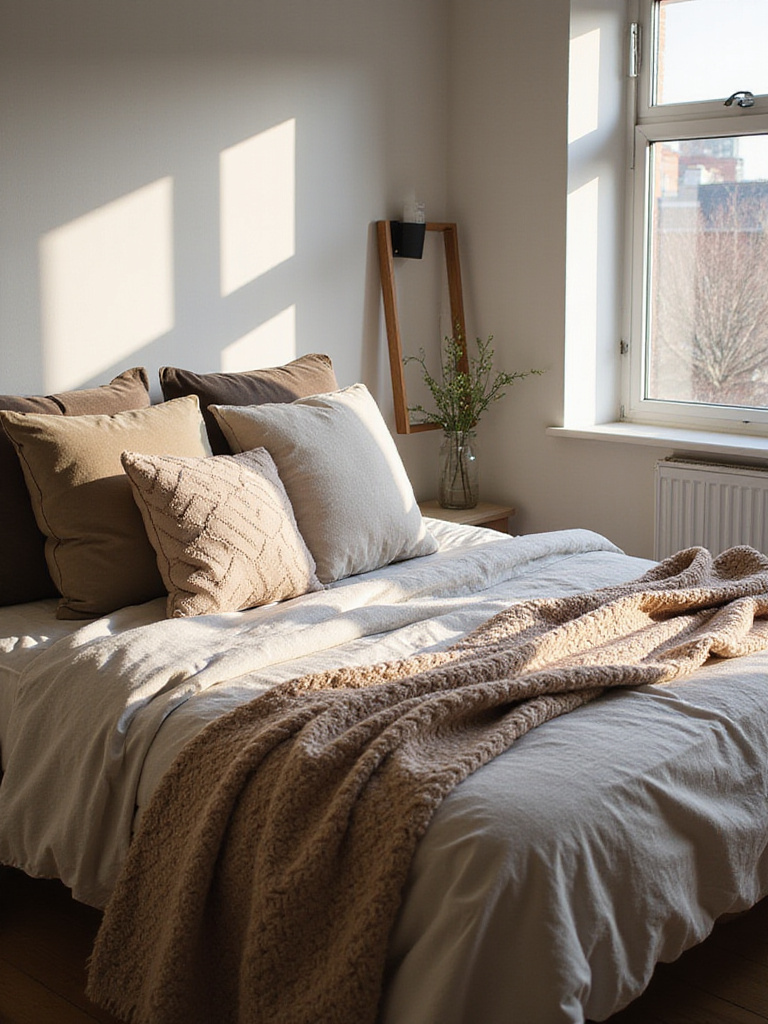
Thoughtfully selected textiles offer these multi-generational benefits:
Imagine coming home to the gentle glow of evening light playing across these layered textures—creating a welcoming environment that feels intentionally designed rather than simply functional, an important distinction in spaces that serve practical needs for multiple generations.
As morning light filters through, the texture creates beautiful patterns across the room, but evenings in apartment bedrooms need thoughtful illumination too. Fairy lights offer a gentle, ambient glow that transforms ordinary spaces into magical retreats—creating atmosphere that appeals to all ages without requiring permanent electrical work or significant investment.
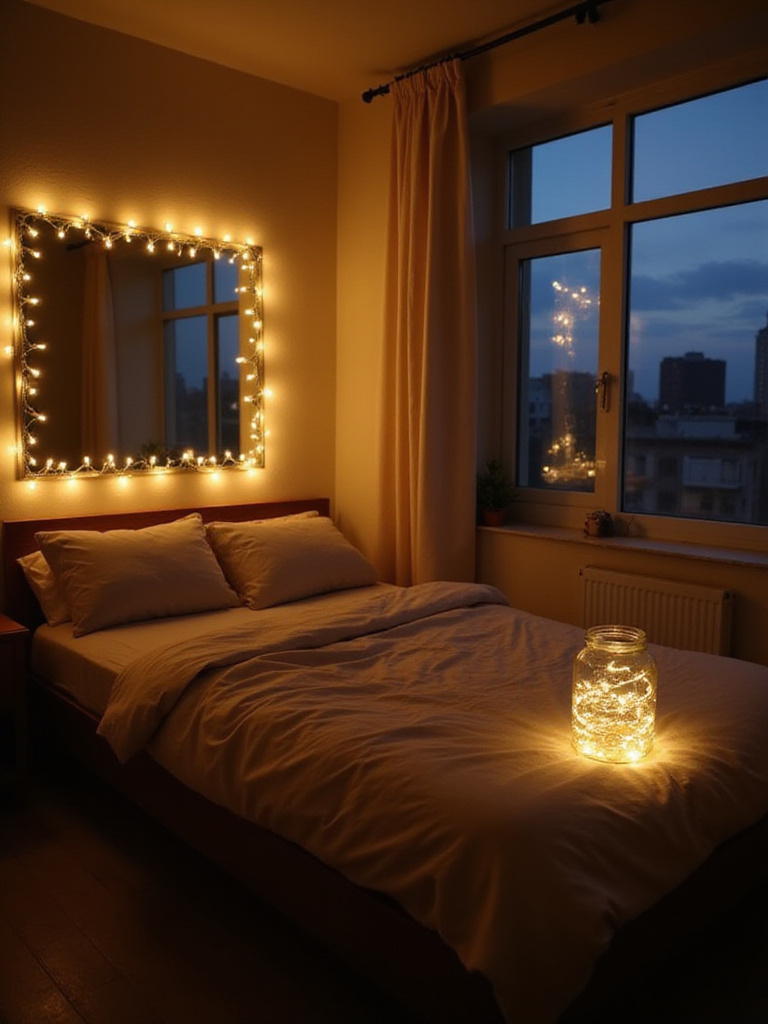
In multi-generational bedrooms, these versatile lights serve multiple purposes:
The maker’s journey from apprentice to master influenced how these simple lights have evolved—today’s LED versions are cool to the touch, energy-efficient, and available with features like timers and remote controls that make them practical for everyday use in family settings.
The sustainable journey of this material involves recognizing that apartment bedrooms shared by multiple generations need special attention to air quality. Younger family members, adults, and seniors may have different respiratory sensitivities, making clean air not just a preference but a health necessity in these intimate spaces.

Consider these air-improving strategies for multi-generational bedrooms:
When your existing decor doesn’t seem to coordinate with these practical additions, look for stylish planters that complement your aesthetic or elegant diffusers that blend with your decor—proving that functional elements can also be beautiful contributions to your apartment bedroom ideas.
Creating harmonious apartment bedrooms in multi-generational homes requires thoughtful consideration of everyone’s needs—from grandparents to grandchildren and everyone in between. These 20 apartment bedroom ideas demonstrate that limited space doesn’t mean limited possibilities; rather, it invites creative solutions that respect individual requirements while fostering connection.
By implementing strategies that address storage, functionality, aesthetics, and comfort across age groups, you can transform ordinary apartment bedrooms into extraordinary spaces where every family member feels valued. Remember that the most successful multi-generational designs aren’t about compromise—they’re about finding beautiful solutions that genuinely work for everyone, creating homes where different generations don’t just coexist but truly thrive together.